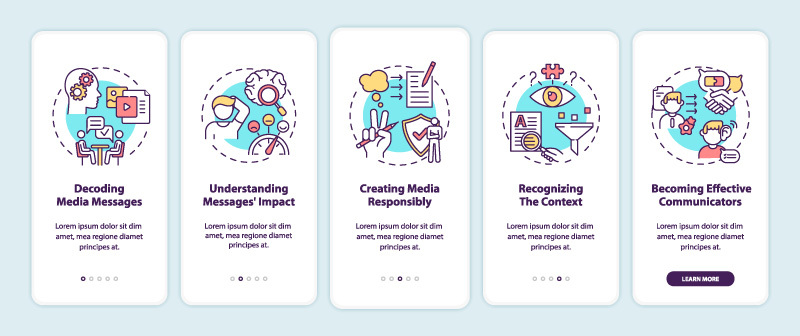In December 2021, Media Literacy: Cultivating Critical Thinking, edited by Jun Sakamoto and Takeshi Yamawaki, was published by Jiji Press.

Media Literacy: Cultivating Critical Thinking, Jiji Press, 396 pages, ¥2,750 (tax included), ISBN: 9784788717978
Contributors include leading university researchers, journalists, and educators involved in media education, making this the definitive volume on "media literacy" at this time.
Through our collaborative research project with SmartNews Media Lab, Amano also contributed to Chapter 2: "Social Media Use and Communication Characteristics Among Young People."
In a two-part series, including this installment, we will introduce a digest of some of the discussions presented in the book alongside Takashi Yamawaki, Director of the SmartNews Media Research Institute and editor of this volume. We will also share follow-up stories not included in the book as articles.
Part 1 focuses on young people's use of SNS. It touches on their approach to news consumption and highlights the growing importance of "algorithm literacy."
1. Why SNS Matters: Millennials and Generation Z
Millennials and Generation Z are often cited as generational categories referring to young people. While definitions vary, we define the former as those born between 1980 and 1996, and the latter as those born between 1997 and 2015.
In terms of their relationship with technology, Millennials grew up alongside information technology, while Generation Z was born into a world where information technology already existed.
The author, born in 1986, belongs to the Millennial generation. They started using feature phones (galapagos phones) in high school, and their very first SNS was mixi, which they used to connect with classmates during university.
In contrast, many Gen Zers are "smartphone natives" whose first mobile device was a smartphone. Their daily information sharing and consumption revolves around smartphones. Social media has also been a natural part of their friendships.
Consequently, for Generation Z, possessing something unique to share, having a distinct "character," and maintaining a personal stance holds significant meaning. The societal rooting of a culture that values and respects individuality further fuels this.
This applies equally to companies and media. Being transparent—having no hidden agenda and showing your true face—has become a key quality when engaging with Generation Z. You could also call it being authentic. In fact, social media accounts that feel overly "work-like" or contrived are often not well-received.
Furthermore, for Gen Z, the real and virtual worlds hold equal standing. Consequently, "what activities one engages in on social media" defines who they are. Sherry Turkle, who studies the relationship between information technology and human psychology at MIT, coined the maxim: "I Share, therefore I am."
What stylish photos or fulfilling life scenes will they share on Instagram? How much can they stand out on TikTok to gain followers? Can they post something that will go viral on Twitter? While Millennials also exhibit this tendency, Gen Z is thought to possess even stronger motivation in this regard.
As reflected in the author's proposed slogan " From Googling to Tagging," this behavior encompasses not only information gathering but also more existential reasons.
2. From Timelines to Algorithms

SNS History: The Future of a Society Connected by "Likes!" East Shinsho, 328 pages, ¥1,012 (tax included) ISBN 978-4-7816-5118-7
The author compares and explains the characteristics of various SNS platforms through works like "History of SNS Evolution " and interviews in diverse settings. To put it simply: Twitter is like "going to the town square to see what everyone is doing," while Instagram is closer to "visiting someone's home/room."
In other words, even when sharing on the same SNS, the focus differs: whether you're observing public opinion or viewing someone's worldview.
Based on my own recent usage, when I open the Twitter app, I find myself checking the Trends tab more often than before, in addition to scrolling through my timeline from top to bottom. This means I'm increasingly checking the key points extracted from the totality of posts or the overall trends, rather than sequentially checking everyone's posts.
This reveals how the power of machines (architecture) and algorithms inevitably shapes the process of discovering what's trending daily.
Recently, more young people are learning about news by watching posts that appear in TikTok's "For You" feed. TikTok's "For You" doesn't show posts from people you follow; instead, it's a system where machines select and deliver posts that are currently trending or content the user is likely to enjoy.
This highlights the increasingly vital role of machines and algorithms in our information-seeking behavior. Taking it a step further, we can observe a shift from timelines to algorithms.
3. News Consumption Among Younger Generations Unconcerned with "Recommendations"
According to a survey by Hosei University Graduate School's Media Environment Design Institute, 'After Social Media' (2020, Nikkei BP),
- (A) They consciously seek out news themselves
- (B) News that is merely noticed by chance is sufficient
Among these two items, those in their teens and twenties are more likely to consider (B) passive contact sufficient, while those in their thirties and older tend to value (A) active contact.
Furthermore, the percentage agreeing with "I only need to know what I want to know" is high among those in their teens and twenties (around 40%), while it drops to about half that (around 20%) among those in their sixties.
So, how should we interpret this notion that "news I happen to notice is sufficient"?
It's not that young people in their teens and twenties lack curiosity. The author's hypothesis is that the level of what they "happen to notice" has improved, and that this "noticing" provides a tangible sense of utility.
What elevates the level of these "things noticed by chance" is precisely the algorithmic selection—the "recommendations"—discussed thus far.
To delve deeper into why resistance to recommendations has diminished, I'd like to introduce the keyword "middle voice." While many are familiar with the active and passive voices, the middle voice is the third voice in this category.
According to philosopher Koichiro Kokubu (Associate Professor, Graduate School of Arts and Sciences, University of Tokyo), while we generally perceive the contrast as active vs. passive, the passive voice actually derives from the middle voice. The antonym of the active voice was the middle voice. So, how do the two differ?
The active voice refers to performing an action, while the passive voice refers to having an action performed upon oneself. Kokubu points out that the active and passive voices represent a way of separating the "action" from the "agent performing the action." In other words, the subject exists outside the process.
In contrast, Mr. Kokubu argues that the middle voice is a form where the "agent performing the action" is included within "the process of that action" – that is, the subject is within the process.
From this perspective, it becomes clear that the term "middle voice" is most suitable for describing how our behavioral history becomes learning data for machines, refining algorithms, and returning as "recommendations"—a recursive encounter with information.
A further point raised is that the middle voice holds contemporary significance in neutralizing the "agent-choice-responsibility" schema.
We do not live in a world composed solely of our own agency or passivity from others; such a view risks narrowly confining the concept of human will. Moreover, precisely because modern life makes information selection difficult, users likely have a strong need to mitigate this.
Younger generations, in particular, rely on algorithm-based "recommendations" because this approach offers high utility as an adaptation strategy to the fast-paced, information-saturated environment of today.
4. The Need for Algorithm Literacy
As discussed thus far, the convenience of our surrounding information environment continues to increase.
However, in my contributed analysis, I also raised questions from a more detached perspective. Specifically, how should we assess the medium-to-long-term impacts of these trends?
The key point was that while machines excel at optimization, it is up to us, the users, to consider and judge what that optimization signifies and whether it remains optimal over the medium to long term.
While "recommendations" certainly improve users' time efficiency, the evaluation of that efficiency (outcome) should vary depending on the timeframe considered. Just as there's the common experience that something bought as "good value" might not seem so good in the long run.
While the active practice of media literacy—each individual discerning good information—remains crucial, it is equally vital to adopt a perspective that also examines the information environment itself, which is often difficult to consciously perceive.
For this reason, grasping the invisible algorithms behind the architecture that now orchestrates news—in other words, "algorithm literacy"—becomes increasingly crucial.









